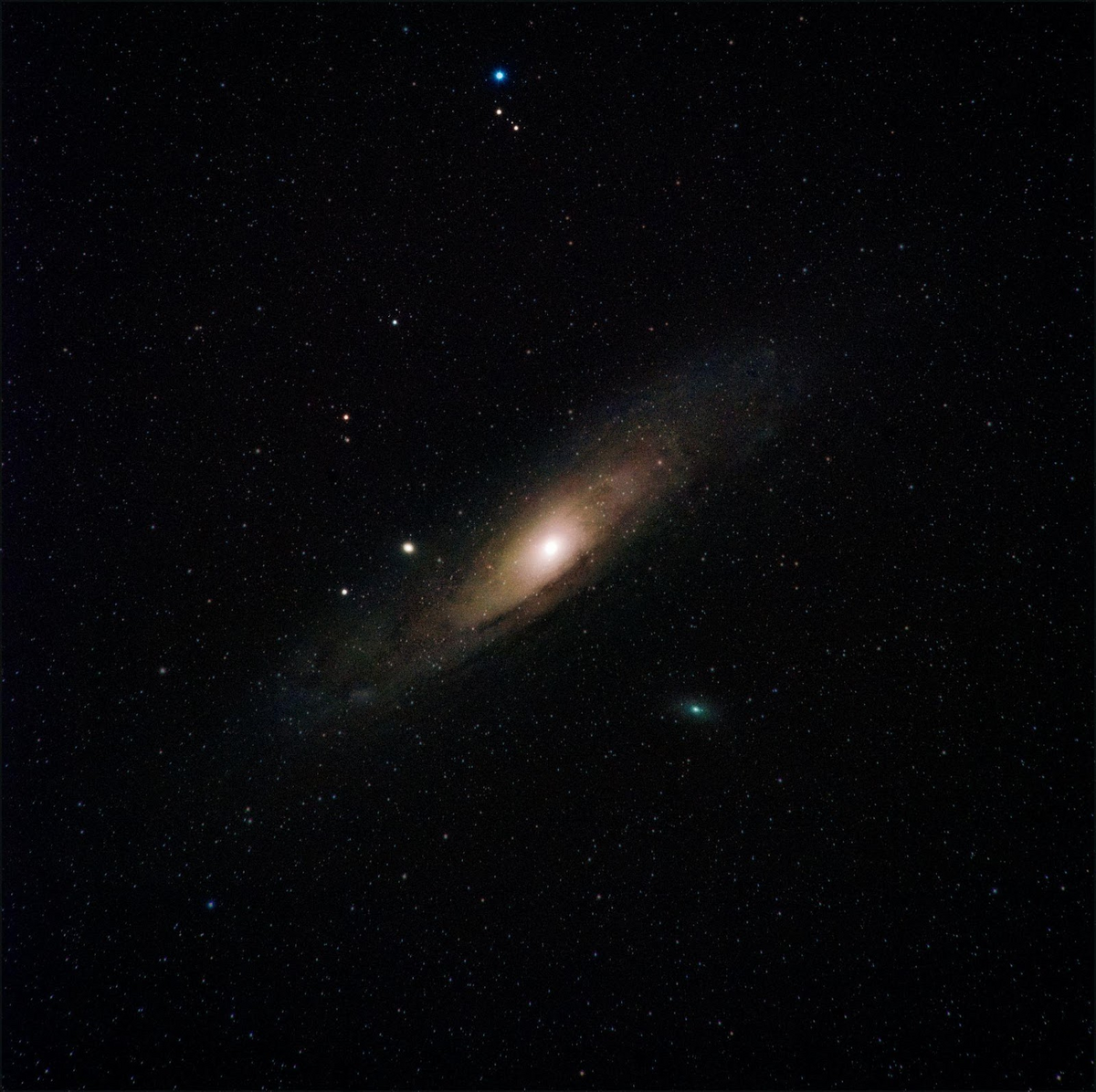![Complete List Of Galaxy Names [Cool Galaxy Names]](https://journalofcosmology.com/wp-content/uploads/2022/09/Complete-List-Of-Galaxy-Names-Cool-Galaxy-Names.png)
Our universe consists of beautiful celestial objects such as planets, natural satellites, stars, galaxies, etc.
Whenever a celestial object gets discovered, it gets named for reference and further research. Like planets, galaxies, too, have unique names. This article will delve into a complete list of cool galaxy names.
What Is a Galaxy?
A galaxy is a collection of dark matter, gas, and stars that are bound to each other with gravitational force. Our universe is filled with over 100 billion galaxies. They are of many shapes and sizes.
Galaxies are classified into three major groups—irregular, spiral, and elliptical. They span a wide variety of sizes, ranging from dwarf galaxies to giant galaxies. Dwarf galaxies are somewhat irregularly shaped, with as few as 100 million stars. On the other hand, giant galaxies can have over a trillion stars.
Types of Galaxies
Earth resides in the Milky Way galaxy. It is a spiral galaxy. Stars in spiral galaxies are formed at a moderate rate. These galaxies are flat and large, with a mass that is nearly one trillion times that of the Sun. They account for the largest fraction of all galaxies in our universe.
Elliptical galaxies vary in shape. They range from elongated to nearly circular. Compared to other galaxies, they contain very little dust and gas. The stars are older, and there is no active formation of them anymore. These galaxies make up about 0ne-third of the galaxies in the universe.
The giant ellipticals are the rarest and largest of this type of galaxy. They are 300,000 light-years away from us. The more common variety of ellipticals is the dwarf ellipticals. They are about a few thousand light-years across.
Irregular galaxies are neither elliptical nor disc like. They also contain very little dust. An ample number of these galaxies are seen in the early universe before the development of ellipticals and spirals.
Besides the three major categories, there are other unusually shaped galaxies. There are some that are in the midst of interacting or colliding, and others with enormous jets of energy shooting out of them.
How Are Galaxies Named?

With over 100 billion galaxies in our observable universe, it can be a disconcerting task to name all of them. There is a system as to how astronomical objects receive their designation.
Proper names are designated only to prominent galaxies or those that are in close proximity to our own galaxy. While some get descriptive names like Whirpool or Andromeda for their distinctive appearance or location, others are named as a combination of sequence value and acronym.
If you want to look up any galaxy, pick up the NGC or the New General Catalogue of Nebulae and Star Clusters. This modern catalog contains the designations of the galaxies from east to west.
The Messier catalog holds names of over 110 galaxies, whereas the Catalogue of Principal Galaxies names over 73,000 galaxies. This means one galaxy can have various names.
Astronomers who discover galaxies usually bestowed upon them proper names. However, with a multitude of new galaxies coming to light each day, it was impractical to give the vast number of celestial bodies proper names.
Instead, new discoveries were given alphanumeric designations. The International Astronomical Union, which consists of recognized scientists and astronomers from around the world, maintains and organizes the official catalogs of the galaxies.
Galaxy Names

Below, you will find a compilation of all galaxies with proper names and meanings in alphabetical order. Some galaxies on the list are accompanied by their designations. You will also find constellation names if you want to take a peek at some of the galaxies through a telescope.
Ancient civilizations named constellations. However, the discovery of galaxies is a more recent phenomenon. It was not possible to observe galaxies without the aid of telescopes. This is why galaxy names closely match everyday objects rather than mythological characters or animals.
Though some galaxies share names with the constellation they are situated in, it does not mean the galaxy lies in that particular constellation. It just means the galaxy is visible to us within the limits of that constellation. In reality, the galaxy may be much further away.
Galaxy Name | Other Designations | Constellation | About the Galaxy |
Whirpool Galaxy | M51a, PGC 47404, UGC 8493, NGC 5194 | Canes Venatici | It is the first to be categorized as a spiral galaxy. |
Triangulum Galaxy | PGC 5818, NGC 0598, UGC 1117 | Triangulum | This spiral galaxy ranks 2nd closest to our galaxy at a distance of 2.7 million light-years away. |
Tadpole Galaxy | PGC 57129, UGC 10214, Arp 188 | Draco | It is named for its resemblance to a tadpole. It is 420 million light-years away. |
Sunflower Galaxy | UGC 8334, PGC 46153, M63, NGC 5055 | Canes Venatici | It was discovered by Pierre Méchain in 1779. It is a flocculent spiral galaxy that is nearly 27 million light-years away. |
Southern Pinwheel Galaxy | PGC 48082, M83, NGC 5236 | Hydra | At only 15 million light-years across, this galaxy is among the brightest spiral galaxies that can be observed in the night sky. |
Sombrero Galaxy | PGC 42407, NGC 4594, M104, UGC 293 | Virgo | It is thought that a massive black hole resides at the center of this galaxy. |
Sculptor Galaxy | PGC 2789, UGCA 13, NGC 253, | Sculptor | It is a starburst galaxy with an abundance of cosmic dust. |
Sculptor Dwarf Galaxy | PGC 3589 | Sculptor | It is a spheroidal dwarf galaxy. It is a neighbor to Milky Way. |
Pinwheel Galaxy | PGC 50063, M101, NGC 5457, UGC 8981 | Ursa Major | It was discovered in 1781. There are large star-forming nebula regions across its spiral arms. |
Wolf-Lundmark-Melotte | PGC 143, UGCA 444 | Cetus | This lonely dwarf galaxy is a barred irregular galaxy. |
Needle Galaxy | UGC 7772, NGC 4565, PGC 42038 | Coma Berenices | This is an edge-on galaxy that is nearly 40 million light-years away. |
Milky Way | This is the spiral galaxy that contains our Solar System. | ||
Mayall’s Object | APG 148, VV 032 | Ursa Major | This stunning galaxy is the result of a collision between two galaxies. |
Small Magellanic Cloud | PGC 3085, NGC 292 | Tucana | This dwarf galaxy is visible to the unaided eye from the southern hemisphere. |
Mice Galaxies | PGC 43062/43065, GC 7938/7939, NGC 4676 | Coma Berenices | These are a pair of galaxies that are mid-collision. They are named for their long tails of gas and stars. |
Medusa Merger | PGC 39068, UGC 7241, NGC 4194 | Ursa Major | This is a duo of merging galaxies with ongoing star formations. |
Malin 1 | VPC 1091, PGC 42102, LEDA 42102 | Coma Berenices | It is the largest spiral galaxy known to us. |
Little Sombrero Galaxy | UGC 8, PGC 218, NGC 7814, Caldwell 43 | Pegasus | It has a distinctive shape and is about 40 million light-years away. |
Lindsay-Shapley Ring | ESO 34-11, AM 0644-741, PGC 19481 | Volans | This barred lenticular galaxy is home to super starburst clusters. |
Large Magellanic Cloud | ESO 56-G 115, PGC 17223 | Dorado | It is neighbor to the Milky Way. It is observable in the southern hemisphere under dark skies. |
Hoag’s Galaxy | PGC 54559 | Serpens | It is named after its discoverer, Arthur Hoag. It is a ring galaxy. |
Hockey Stick Galaxy | PGC 42863, UGC 7907 | Canes Venatici | This highly warped distinctive-looking galaxy is a barred spiral galaxy. |
Fireworks Galaxy | PGC 65001, NGC 6946, UGC 11597 | Cygnus | In the last century, ten stellar explosions were observed in this face-on spiral galaxy. |
Eye of Sauron | PGC 38739, NGC 4151, UGC 7166 | Canes Venatici | This galaxy earns its name for its similarity to the Lord of the Ring’s Eye of Sauron. |
Cosmos Redshift 7 | Sextans | It is among the oldest known galaxies. It is a redshift emitter, mostly made up of first-generation stars. | |
Comet Galaxy | IC 3418, VCC 1217 | Sculptor | It is part of a distant galaxy cluster called Abell 2667. |
Coma Pinwheel Galaxy | VCC 1217, IC 3418 | Coma Berenices | This unbarred spiral galaxy is visible through small telescopes. |
Circinus | NGC 4254, PGC 39578 | Circinus | A Seyfret galaxy, it is believed to host massive black holes. |
Cigar Galaxy | PGC 28655, UGC 5322, M82, NGC 3034 | Ursa Major | At the core of this edge-on spiral galaxy, young stars are being rapidly formed. |
Centaurus A | Arp 153, PGC 46957, NGC 5128 | Centaurus | There is an active supermassive black hole at the center of this galaxy. |
Cartwheel Galaxy | PGC 2248 | Sculptor | The cartwheel shape of this galaxy formed after a violent galactic collision. |
Butterfly Galaxies | PGC 42064 & 42069, NGC 4567 & 4568, UGC 7776 & 7777 | Virgo | These are also known as Siamese Twins. They are a duo of unbarred spiral galaxies in the early stages of collision. |
Bode’s Galaxy | UGC 5318, PGC 28630, M81, NGC 3031 | Ursa Major | This spiral galaxy is so large and bright that it is visible through binoculars. |
Black Eye Galaxy | NGC 4826, PGC 44182, Evil Eye Galaxy, M64 | Coma Berenices | This isolated spiral galaxy lies 17 million light-years away. |
Backward Galaxy | PGC 42701, NGC 4622 | Centaurus | It has a prominent ring structure. |
Antennae Galaxies | PGC 37967 & 37969, NGC 4038 & 4039 | Corvus | They are a duo of interacting galaxies. |
Andromeda | PGC 2557, UGC 454, M31, NGC 224 | Andromeda | It is the largest and closest spiral galaxy to the Milky Way. |
Frequently Asked Questions
Which Galaxy Is Destined to Collide with the Milky Way?
Our galaxy, the Milky Way, will collide with the Andromeda galaxy, our closest large neighbor. This is set to happen nearly five billion years from now.
Which Is the Most Distant Galaxy Known to Us?
The GN-z11 is the oldest and most distant galaxy to be detected in the observable universe. In 2022, another galaxy candidate called HD1 was observed. It may potentially be the farthest galaxy in the universe.
Which Is the Largest Known Galaxy to Us?
In 2022, Alcyoneus, a giant radio galaxy, dethroned the previously largest known galaxy, IC 1101.
Conclusion
With over 100 billion galaxies and more being discovered on a regular basis, it is important to classify and name them. Some galaxies are bestowed distinctive names, while others get cataloged with an alphanumeric designation.
